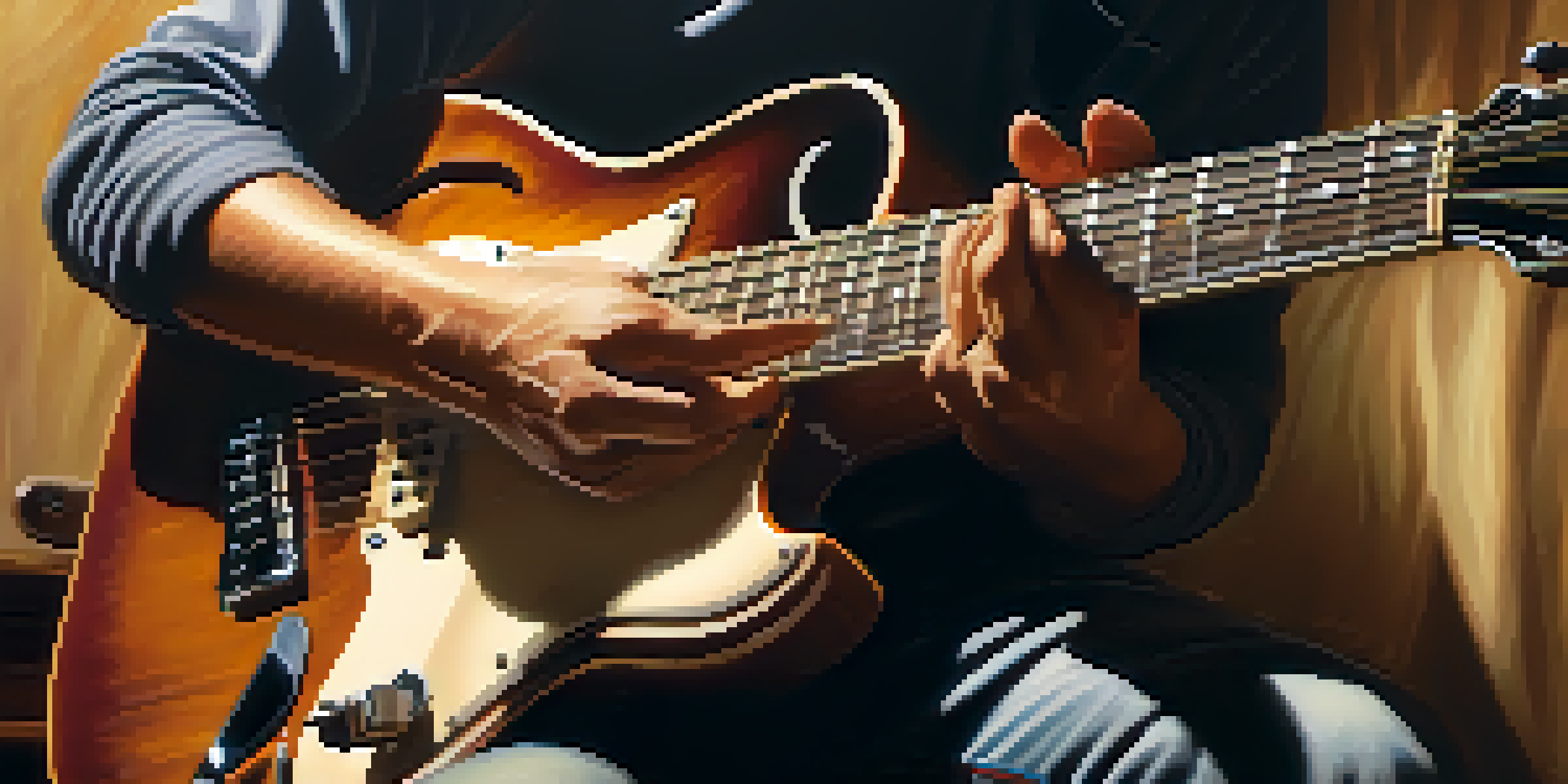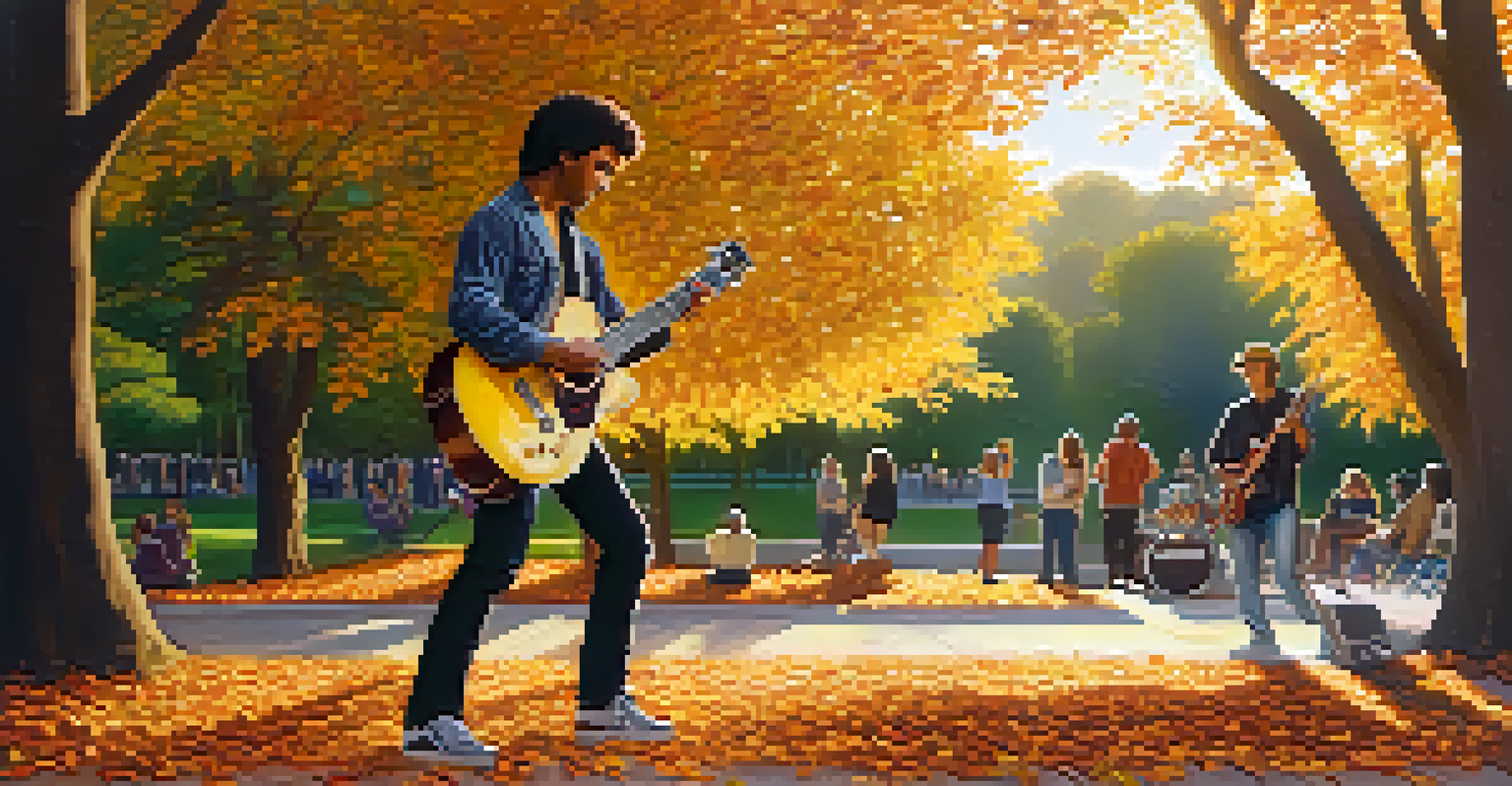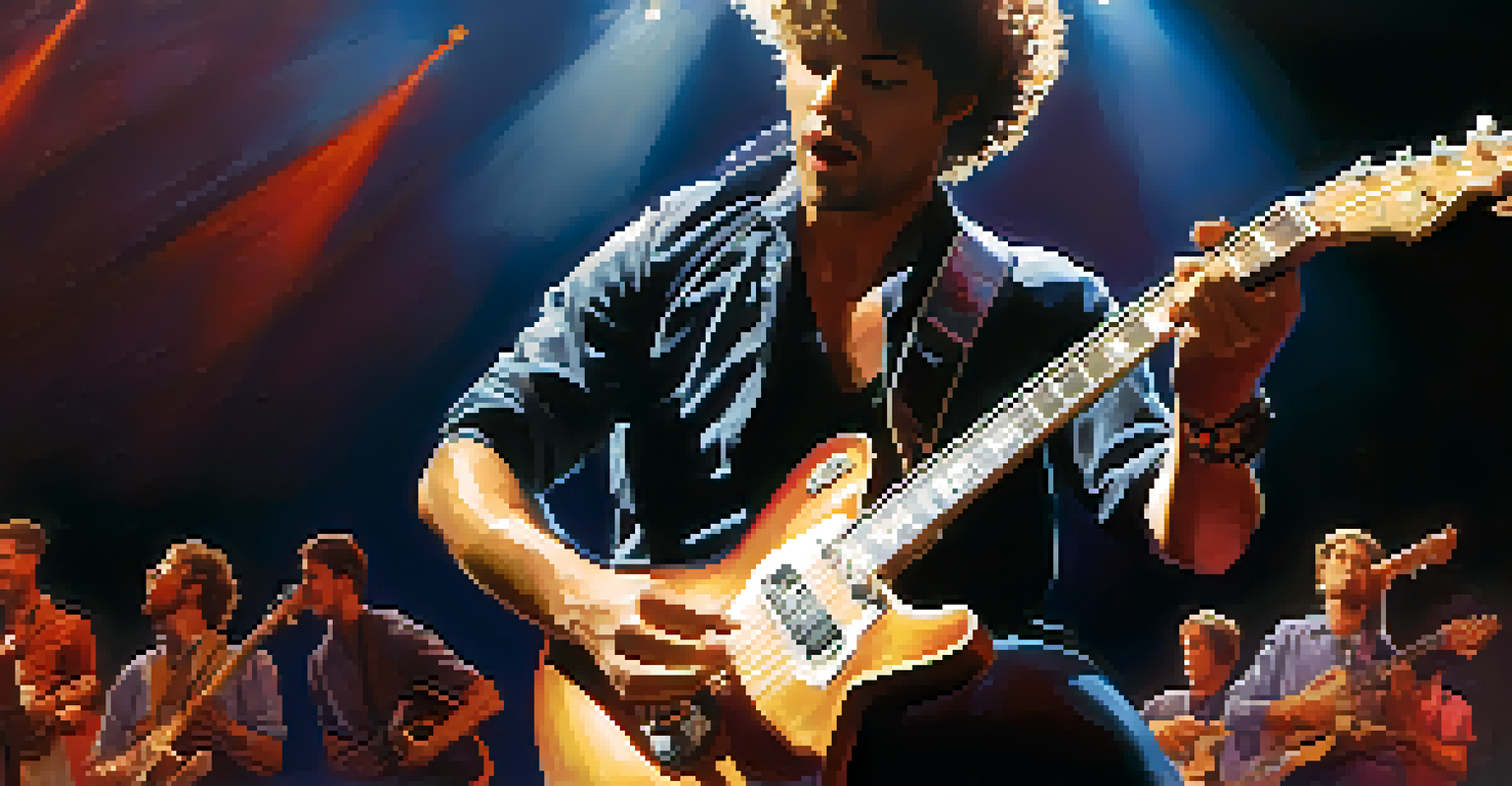Percussive Guitar Techniques: Rhythm Meets Melody

Understanding Percussive Guitar Techniques
Percussive guitar techniques combine rhythm and melody, creating a unique sound that captivates listeners. These methods often involve tapping, slapping, and muting strings, allowing the guitarist to produce various percussive effects while playing chords. By integrating these techniques, musicians can add depth and texture to their performance, making it more dynamic and engaging.
Music is the shorthand of emotion.
Think of it like a drummer using different parts of the drum kit to create a complex rhythm. Similarly, a guitarist can use their fingers and palm to strike the guitar body, producing beats that complement the notes being played. This interplay between rhythm and melody can transform a simple strumming pattern into a captivating musical journey.
Related Resource
Ultimately, mastering these techniques opens up a world of creative possibilities. Whether you’re performing solo or with a band, incorporating percussive elements can elevate your playing and keep your audience hooked.
The Basics of Tapping Techniques
Tapping is a fundamental percussive technique that involves using the fingers to strike the strings directly on the fretboard. This method allows guitarists to produce quick melodies and harmonies without the need for traditional picking. By utilizing both hands, players can create a fuller sound and add intricate layers to their music.

For example, a guitarist might use their dominant hand to play a melody while the other hand taps out a rhythm on the fretboard. This creates a powerful effect that can mimic the sound of a piano or even a full band. As a result, tapping can make even a simple progression sound rich and complex.
Explore Percussive Guitar Techniques
Incorporating techniques like tapping, slapping, and palm muting can add depth and rhythm to your guitar playing.
To get started with tapping, practice some basic scales and incorporate finger taps into your routine. Gradually, you’ll find ways to blend tapping with other techniques, enhancing your overall guitar playing style.
Using Slapping Techniques for Impact
Slapping is another exciting percussive technique that adds a punchy, rhythmic quality to guitar playing. This technique involves striking the strings with the thumb while simultaneously muting them with the palm, producing a sharp, percussive sound. It's commonly associated with funk and jazz but can be adapted to various musical genres.
The true beauty of music is that it connects people. It carries a message, and we, the musicians, are the messengers.
Imagine a bass line; slapping on the guitar can provide a similar groove, making it perfect for danceable tracks. When combined with other techniques like fingerpicking, slapping can create a complex rhythmic pattern that keeps listeners engaged. This versatility makes it a favorite among many guitarists.
Related Resource
To master slapping, focus on your hand positioning and the amount of pressure you apply to the strings. With practice, you’ll develop a unique style that captures the essence of this vibrant technique.
Palm Muting for Rhythmic Clarity
Palm muting is a technique that involves resting the palm of your hand on the strings near the bridge while strumming or picking. This creates a muted sound that can emphasize rhythm and provide a percussive quality to your playing. It’s particularly effective in genres like rock and metal, where clarity and punch are essential.
When you palm mute, you can control the sustain of the notes, allowing for crisp, staccato rhythms. This technique can be used to build tension in a song or create a dynamic contrast between sections. Think of it as adding a drum roll before a big reveal; it sets the stage for what’s to come.
Combine Techniques for Creativity
Blending different percussive methods allows musicians to create unique sounds that resonate with their audience.
To incorporate palm muting into your practice, start with simple chords and gradually explore how it changes the feel of your music. Over time, you’ll discover new ways to use this technique to enhance your compositions.
Creating Rhythmic Patterns with Fingerstyle
Fingerstyle guitar is another powerful approach that allows for intricate rhythmic patterns while playing melodies. By plucking the strings with your fingers instead of a pick, you can create a fuller sound that highlights the nuances of each note. This technique is often used in folk, classical, and acoustic genres.
Imagine playing a song where the bass notes are plucked with your thumb while the melody is played with your fingers. This creates a layered effect that can mimic a full band, making your performance richer and more engaging. Fingerstyle not only adds complexity to your music but also gives you greater control over dynamics.
Related Resource
To improve your fingerstyle technique, practice simple patterns and gradually increase their complexity. The more comfortable you become, the more creative you can be in your arrangements.
Incorporating Body Percussion into Your Play
Body percussion is an innovative way to bring even more rhythm into your guitar playing. This technique involves using your body as an instrument by clapping, stomping, or tapping along with your music. It adds an interactive element to your performance that can engage your audience on a deeper level.
For instance, while playing a simple chord progression, you might clap your hands or tap your foot to keep the beat. This not only enhances the rhythm but also creates a communal experience, inviting listeners to join in. It’s like creating a mini percussion ensemble right on stage.
Consistent Practice is Key
Regular practice and experimentation are essential for mastering percussive guitar techniques and developing your style.
To experiment with body percussion, start by incorporating simple claps or taps into your practice routine. As you grow more comfortable, you’ll find creative ways to blend these sounds with your guitar playing.
Combining Techniques for Unique Sounds
The beauty of percussive guitar techniques lies in their versatility and the potential for combination. By blending tapping, slapping, palm muting, fingerstyle, and body percussion, you can create a unique sound that sets your music apart. This experimentation is where true creativity flourishes.
Think of it as painting with different colors; each technique adds its own shade to your musical canvas. Mixing these methods can lead to exciting discoveries, allowing you to create rhythms and melodies that resonate with your audience in unexpected ways. It’s all about finding your voice as an artist.

To get started, choose two or three techniques that intrigue you and start experimenting. Don't be afraid to make mistakes; that's part of the process. Over time, you’ll develop a style that reflects your individuality and musical vision.
Practicing and Perfecting Your Skills
Like any skill, mastering percussive guitar techniques requires consistent practice and experimentation. Set aside time each day to focus on different techniques, allowing yourself to explore their nuances and find what works best for you. It’s important to be patient and give yourself the freedom to learn.
Consider recording your practice sessions to track your progress and identify areas for improvement. Listening back can provide valuable insights into your playing style and help you refine your sound. Additionally, seeking feedback from fellow musicians can offer fresh perspectives and inspire new ideas.
Remember, the key to success is not just in repetition but in creativity. Allow yourself to have fun while practicing, and you’ll find that your skills will develop naturally over time.